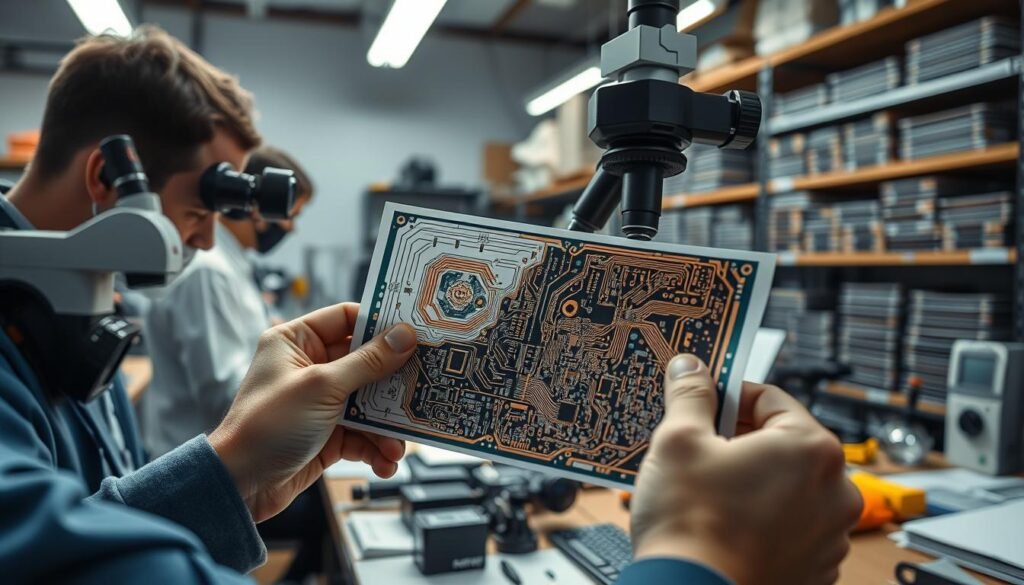In an era where electronics manufacturing complexity grows daily, choosing a supplier that simply assembles boards isn’t enough. What separates market leaders from stalled projects often comes down to one critical factor: Does your manufacturing partner deeply understand your industry’s technical requirements, compliance standards, and performance expectations?
We’ve witnessed how generic PCB fabricators struggle with specialized sectors like medical devices or aerospace. True success emerges when your electronics manufacturing services provider acts as an extension of your engineering team. This means offering design-for-manufacturing insights during prototyping, selecting components aligned with your product lifecycle, and implementing testing protocols that meet regulatory benchmarks.
The difference becomes clear when comparing basic assembly shops to full-service partners. While the former focuses solely on PCB population, strategic collaborators optimize every phase – from initial concept layouts to final quality assurance. They anticipate thermal management challenges in automotive systems or signal integrity needs in IoT devices because they’ve mastered your industry’s playbook.
Key Takeaways
- Industry-specific manufacturing knowledge directly impacts product reliability and compliance
- Strategic partners provide design optimization, not just board assembly
- End-to-end services reduce iterative redesigns and production delays
- Regulatory expertise ensures products meet sector-specific certifications
- Alignment on technical goals accelerates time-to-market by 30-45%
- Proactive DFM guidance prevents costly post-production revisions
Exploring the Electronics Manufacturing and Design Landscape
Modern electronics manufacturing demands precision at every design and assembly phase. Unlike generic production approaches, specialized workflows ensure components meet exact performance thresholds while maintaining cost efficiency. This systematic methodology transforms concepts into reliable products through eight structured phases.
Understanding the Role of PCB Design and Engineering
Effective PCB design bridges theoretical schematics and manufacturable layouts. Our engineers optimize trace routing for signal clarity while adhering to thermal management protocols. This upfront planning reduces prototype iterations by 40% compared to standard design practices.
From Conception to Prototyping: Key Manufacturing Phases
The development process begins with component analysis to avoid obsolete parts. Five prototypes typically undergo three validation stages:
| Phase | Key Activities | Deliverables |
|---|---|---|
| Partnership Evaluation | Technical capability assessment | Feasibility report |
| Design Finalization | DFM optimization | Approved Gerber files |
| Prototype Testing | Environmental stress screening | Certified samples |
Integrating Assembly, Testing, and Inspection Processes
Advanced electronics manufacturing services combine automated pick-and-place systems with AOI (Automated Optical Inspection). This dual approach achieves 99.98% first-pass yield rates. Functional testing replicates real-world operating conditions, ensuring compliance with industry-specific standards.
Partnering with a PCBA Factory that Understands Your Industry

Choosing collaborators for electronics production demands more than surface-level reviews. Effective partnerships emerge when technical alignment meets operational excellence. We guide teams through multi-layered assessments that reveal true manufacturing competence.
Evaluating Capabilities and Manufacturing Processes
Technical assessments begin with equipment audits. Leading manufacturers use high-speed SMT lines and 3D AOI systems for precision assembly. Ask potential partners about their:
| Evaluation Criteria | Key Phases | Performance Metrics |
|---|---|---|
| Quickturn Experience | Prototype Development | ≤5-day turnaround |
| Delivery Reliability | Production Scaling | 98% on-time rate |
| Technology Stack | Quality Assurance | 0.65% defect rate |
Demand documented case studies showing industry-specific solutions. Medical device partners should demonstrate ISO 13485 compliance, while automotive suppliers need IATF 16949 certifications.
Identifying Value through Customer Service and Quickturn Solutions
True service excellence extends beyond response times. Top-tier manufacturers provide:
• Instant online quoting systems
• Real-time production tracking
• HDI board design validation tools
Geographic proximity cuts shipping delays by 18-32 hours for urgent revisions. Partners with multi-shift operations maintain 24/7 technical support – critical for resolving DFM issues during overnight builds.
Leveraging Advanced Technology and Quality Assurance in PCB Manufacturing

Cutting-edge innovation now drives PCB manufacturing at every stage. Modern facilities combine precision equipment with intelligent quality systems to deliver unmatched reliability. This fusion of technology and rigorous oversight ensures products meet exacting standards across industries.
Utilizing State-of-the-Art Equipment and Automated Inspection
Top-tier manufacturers deploy automated pick-and-place machines achieving 0.01mm placement accuracy. Reflow ovens with closed-loop thermal control maintain ±1°C profiles, critical for cost-effective PCB manufacturing. Three-layer quality checks using AOI, X-ray, and flying probe testers catch 99.97% of defects before shipment.
Ensuring Rigorous Testing and Certification Standards
We implement environmental stress tests simulating 15-year lifespans in 72 hours. ISO 9001 and 14001 certifications validate both quality and eco-conscious practices. Every batch undergoes:
- Thermal cycling (-40°C to 125°C)
- Vibration resistance (20-2000Hz)
- Signal integrity validation
Custom Solutions for Small and Mid-Volume Production
Specialized PCBA contract manufacturers optimize workflows for orders from 50-5,000 units. Flexible SMT lines switch component types in 18 minutes, supporting mixed-volume runs. Digital twin simulations reduce prototype costs by 35% while maintaining electronics manufacturing services standards.
Conclusion
Success in electronics development hinges on selecting manufacturers who speak your industry’s technical language. We help teams transform complex requirements into reliable products through PCB assembly services that blend precision with strategic foresight. Beyond board population, true collaborators offer lifecycle support – from aftermarket services like recalibration to handling component obsolescence.
Our experience shows three non-negotiable partner qualities: multi-stage quality control processes, adaptive production for various order sizes, and transparency in communication. Manufacturers excelling in these areas reduce time-to-market by 25-40% while maintaining military-grade reliability standards.
Look for partners addressing electronics design challenges proactively, like optimizing layouts for thermal stress or signal integrity. Advanced design validation tools prevent 72% of post-production issues, according to industry data. This technical alignment ensures your project evolves alongside market demands without costly redesigns.
Start evaluations by auditing potential partners’ testing protocols and scalability plans. The right collaborator becomes an extension of your team – delivering not just circuits, but competitive advantages that endure.
FAQ
How does PCB design influence manufacturing efficiency?
What certifications indicate a reliable PCBA manufacturer?
Can manufacturers accommodate mixed-technology boards?
What turnaround times are realistic for prototype batches?
How do you verify component traceability?
What testing methods ensure board reliability?
Are small-volume orders cost-effective?
About The Author
Elena Tang
Hi, I’m Elena Tang, founder of ESPCBA. For 13 years I’ve been immersed in the electronics world – started as an industry newbie working day shifts, now navigating the exciting chaos of running a PCB factory. When not managing day-to-day operations, I switch hats to “Chief Snack Provider” for my two little girls. Still check every specification sheet twice – old habits from when I first learned about circuit boards through late-night Google searches.
